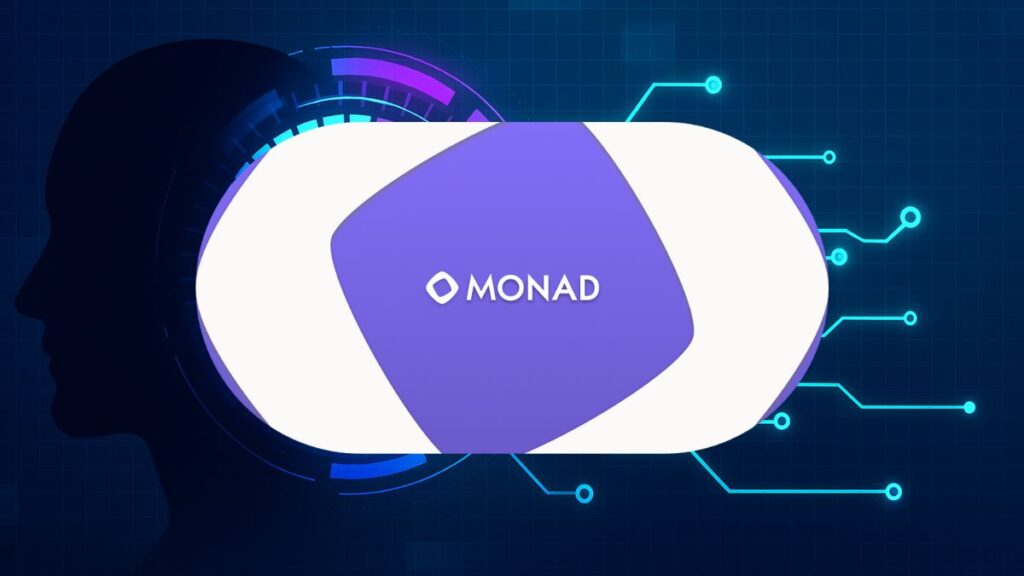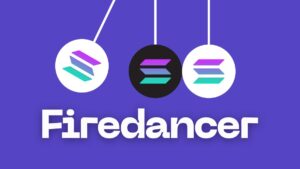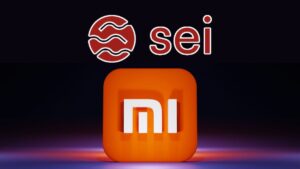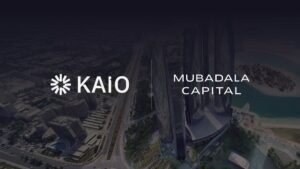The blockchain landscape continues to evolve with new platforms reshaping how decentralized ecosystems are built and experienced. Among these emerging projects, Monad has captured attention for its ambitious vision, strong community focus, and potential to influence the next chapter of digital innovation across industries.
What is Monad?

A New Layer 1 Blockchain
Monad is a next-generation Layer 1 blockchain designed to redefine scalability and accessibility in the decentralized ecosystem. Positioned as a high-performance platform, it aims to provide developers and users with a foundation that balances speed, security, and decentralization. Unlike networks that rely on external scaling solutions, the L1 operates as a self-sufficient base layer, offering a robust environment for decentralized applications (dApps) and digital assets.
Origins and Vision
The project was initiated by Monad Labs, a team of experienced professionals with backgrounds in trading systems and distributed computing. Their vision is to create a blockchain that eliminates the compromises often associated with performance and decentralization. By focusing on efficiency and inclusivity, the L1 attracts developers, enterprises, and communities looking for a reliable infrastructure to build the next wave of decentralized finance (DeFi), gaming, and Web3 applications.
Ecosystem and Community Growth
Beyond its technical ambitions, Monad is actively cultivating a global ecosystem. Programs such as accelerators, hackathons, and community-driven initiatives are designed to support builders and innovators. This approach has already attracted significant attention from developers and investors, positioning Monad as a promising contender in the competitive Layer 1 landscape. Its growing community, spread across platforms like Discord and Telegram, reflects the enthusiasm surrounding its upcoming mainnet launch.
The Native Token
At the center of the ecosystem is the MON token, which will serve as the network’s native currency. While full tokenomics are still being finalized, MON is expected to play a role in transaction fees, staking, and governance. Early community members have already participated in airdrop campaigns, highlighting the token’s importance in fostering engagement and adoption.
This growing momentum highlights the L1’s potential to become a cornerstone blockchain, driving innovation, adoption, and sustainable growth across decentralized ecosystems worldwide.
How Does Monad Work?

Parallel Execution Model
Monad introduces a parallel execution engine that allows multiple transactions to be processed simultaneously rather than sequentially. This design significantly increases throughput, enabling the network to handle thousands of transactions per second without bottlenecks. By leveraging advanced scheduling algorithms, the L1 ensures that independent transactions are executed concurrently, while dependent ones are ordered correctly to maintain consistency. This approach reduces latency and provides a smoother experience for decentralized applications.
Optimized Consensus Protocol
At the core of Monad’s operation is a consensus mechanism designed for both speed and security. Instead of relying on traditional proof-of-work, Monad employs a proof-of-stake model enhanced with deterministic finality. Validators stake tokens to participate in block production, and the protocol ensures rapid confirmation times by finalizing blocks within a few seconds. This consensus structure minimizes energy consumption while maintaining strong resistance against malicious actors.
EVM Compatibility and Tooling
Monad is fully compatible with the Ethereum Virtual Machine (EVM), allowing developers to deploy existing smart contracts without modification. This compatibility ensures that projects can migrate seamlessly, leveraging familiar programming languages like Solidity. Additionally, the L1 provides developer-focused tools such as optimized compilers, debugging environments, and APIs that streamline the building process. This combination of performance and accessibility makes it easier for teams to scale applications without sacrificing reliability.
Data Availability and Storage
To support high throughput, Monad integrates an efficient data availability layer that ensures all participants can access transaction data quickly. The blockchain employs advanced compression techniques and optimized storage structures to reduce overhead while preserving transparency. This architecture not only improves scalability but also lowers costs for users and developers. By maintaining a balance between accessibility and efficiency, Monad creates a sustainable infrastructure for long-term growth.
What is the MON Token?

Introduction to MON
The MON token is the native digital asset of the Monad blockchain, designed to serve as the backbone of its economic and governance framework. Unlike speculative tokens that exist primarily for trading, MON is structured to provide utility across multiple layers of the ecosystem. It underpins network security, incentivizes participation, and facilitates seamless interaction between users, developers, and validators.
Utility in the Ecosystem
One of the primary functions of MON is to cover transaction fees, ensuring that users can interact with decentralized applications efficiently. Validators and delegators rely on MON for staking, which secures the network and aligns incentives across participants. Additionally, MON is expected to play a role in governance, granting holders the ability to vote on protocol upgrades, parameter changes, and community-driven initiatives. This multi-purpose design ensures that MON remains integral to the blockchain’s long-term sustainability.
Incentives and Distribution
The distribution of MON is structured to balance early adoption with long-term growth. Initial allocations are directed toward validators, developers, and community programs, fostering a healthy ecosystem from the outset. Incentive mechanisms, such as staking rewards and liquidity programs, encourage active participation while discouraging passive speculation. By aligning rewards with meaningful contributions, Monad ensures that MON supports both security and innovation.
This framework supports transparent vesting schedules, community allocations, and builder grants, reducing sell pressure while rewarding long-term contribution. Clear issuance disclosures and updates help participants evaluate risk, align expectations, and track progress as network programs expand across infrastructure, tooling, and growth.
Market Position and Outlook
As the ecosystem expands, MON is positioned to become a central asset within decentralized finance, gaming, and enterprise applications built on the network. Its role extends beyond utility, serving as a signal of community confidence and adoption. While market dynamics will influence its valuation, the token’s design emphasizes stability, governance, and scalability. For developers and users alike, MON represents more than a currency; it is the connective tissue that powers the broader Monad vision.
Conclusion
Monad stands out as a promising Layer 1 project, combining innovation, community focus, and practical design. Its ecosystem, token utility, and developer-friendly approach position it as a contender to shape blockchain’s future, offering a foundation for scalable, secure, and inclusive decentralized applications.










